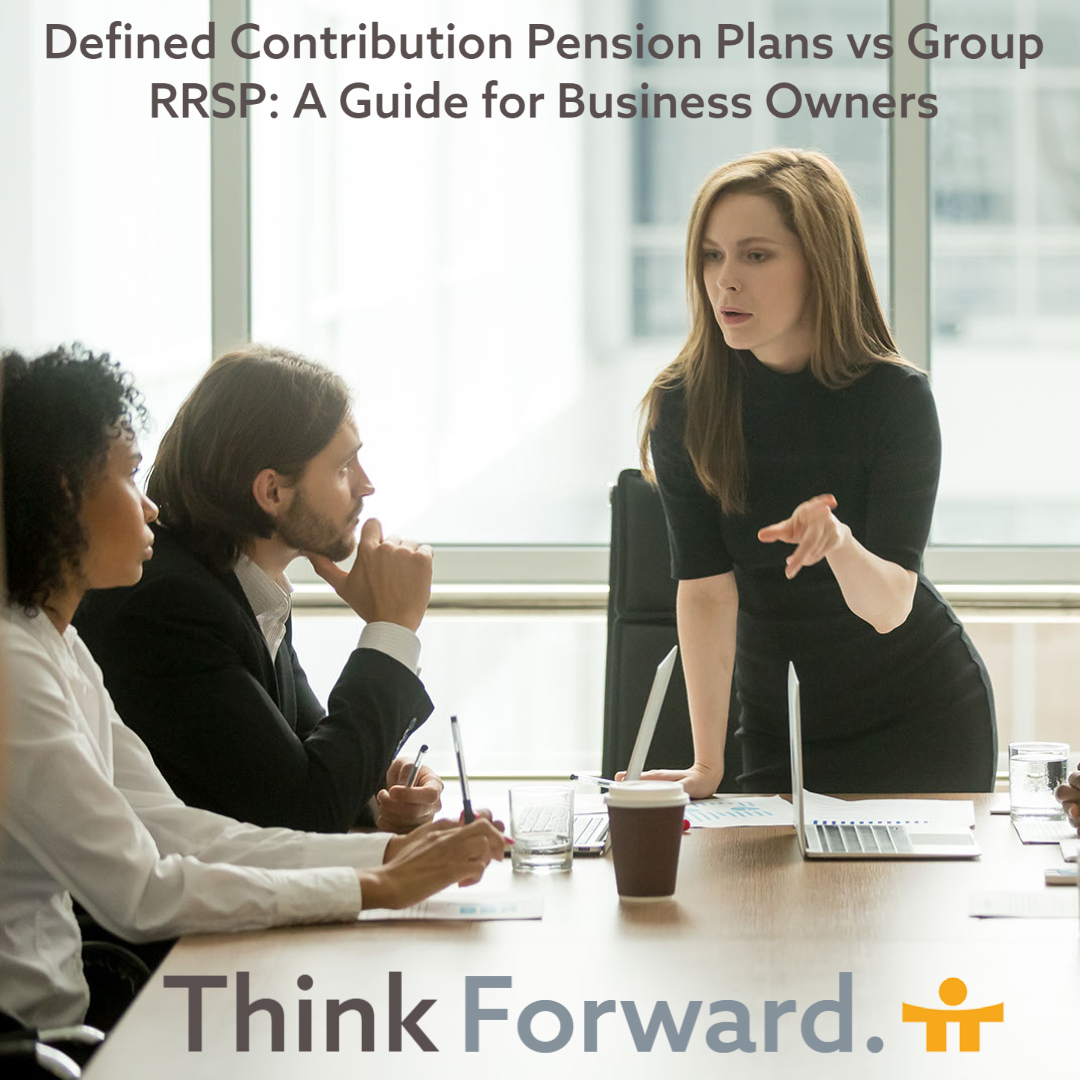Defined Contribution Pension Plans vs Group RRSP: A Guide for Business Owners
Employers have several options available to them when it comes to setting up a retirement savings plan for their employees. Defined Contribution Pension Plans and Group RRSPs are the most accessible plans to most businesses. Here is what you need to know about each plan and how they can work for your employees.
What Is A Defined Contribution Pension Plan?
Defined Contribution Pension Plans are an employer sponsored retirement savings option available to Canadian business owners and their employees. Defined Contribution Pensions Plans are made up of a combination of employee contributions, employers’ contributions, and an optional voluntary contribution component. Defined Contribution Pension Plans are regulated by provincial pension laws, which varies from province to province.
What Is a Group RRSP?
A Group Registered Retirement Savings Plan (Group RRSP) is an employer sponsored retirement savings plan. Group RRSP’s have many similarities to individual RRSPs with the only difference being that they are administered on a group basis. The plans are made up of employee and employer contributions, but unlike traditional pensions, the employer is not required to contribute any amount to the plan.
Similarities and Difference
- Tax Deferred Savings: Both Defined Contribution Pension Plans and Group RRSPs offer tax deferred savings for employees that contribute to them. Contributions are taken at the source before tax and contributed to the plans on the employee’s behalf. Both investment options allow employees investments to grow tax free until they retire, at which point the funds with be taxed as they are withdrawn.
- Contribution Limits: Both plans are subject to annual contribution limits. This amount is equal to a percentage of each employee’s income from the previous year. Both employee and employer contributions count towards this annual limit. Both plans will also cause a pension adjustment to employees. This means their individual RRSP will be reduced based on the amount contributed to their employer sponsored plan. This keeps an equal playing field for those who do not have work pensions.
- Age Limits: Defined Contribution Pension Plans and Group RRSPs both require that employees stop contributing to the plan and start drawing on the funds at age 71. At this point, employees must convert the plans to an income fund that will pay them out a retirement income. For Defined Contribution Pension Plans, this fund is called a Life Income Fund (LIF). LIFs have minimum and maximum withdrawal requirements that plan holders must adhere to. Group RRSPs holders have two options at age 71. Plan members can a) cash out the plan and pay all tax owing or b) convert the plan to a RRIF and start taking an income. RRIFs have minimum withdrawal requirements that plan holders must adhere to.
Pros and Cons
Defined Contribution Pension Plans
Pros
- Attractive to Employees due to the employer matching component. This can greatly accelerate employee’s retirement savings
- Funds are locked-in and therefore not accessible until the employee retires. They do not have the option to spend their retirement savings frivolously.
- Funds grow tax free if they stay in the account
- Employer Contributions are tax deductible
- Typically, the investments offered in a pension plan have a much lower fee than traditional investments.
- Simple, reduced selection of investment options available within the plan.
Cons
- Defined Benefit Pension Plans can come with higher administration costs and require continuous maintenance.
- Due to the fact funds are locked in, employees have little to no flexibility in how they use the money they accumulate.
- Employer contributions are expected. This can be a significant expense, depending on how many employees a business has.
- Benefits at plan end are at the mercy of market fluctuations.
Group RRSP
Pros
- Employer contributions are not mandatory. This allows for businesses to offer their employees a retirement savings option regardless of the financial abilities of the company, with the flexibility for the company to contribute at any point if it becomes feasible.
- Funds grow tax free if they stay in the account.
- Group RRSPS have low start up and maintenance costs.
- Generally, Group RRSP have a must larger investment shelf than pension plans.
- No legislative regulation means flexibility for employees to dip into their savings if necessary ie. Home buyers’ program or Lifelong Learners Program.
Cons
- Employees have the option to withdraw from the plan at any time, which can severely impact their retirement savings.
- Larger investment shelves mean more opportunity for employees to take unnecessary or unsuitable risk with their investments.
- Employer Contributions are a taxable benefit to employees
- Benefits to employee are not guaranteed and are subject to market fluctuations
Bottom Line
Both plans offer their advantages and disadvantages, with each having something unique to offer. Whichever you choose for your business, you can rest assured you are helping your employees work towards a financially secure retirement!
